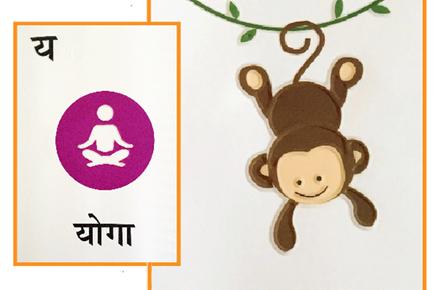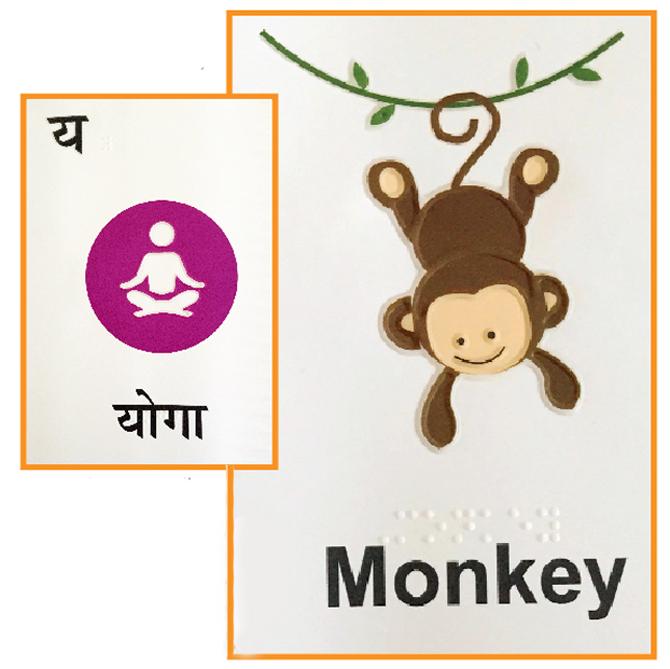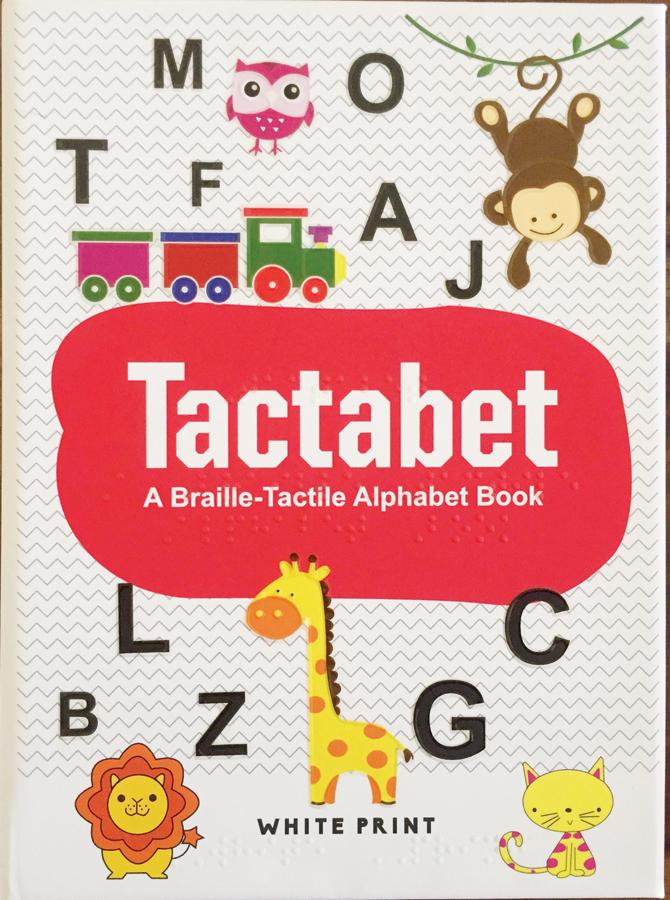A newly launched alphabet book for the visually impaired goes beyond spellings to offer tactile images that helps kids experience apples and monkeys on the pages


The representation of the letter Y in the Hindi version
From afar, it looks like any other ABC picture book — the 'A for apple, B for ball' variety that children use to learn the alphabets from. But on a closer look, or touch rather, we see how Tactabet (Tactile + Alphabet) is different. Along with Roman text, each alphabet is written with bubble-like dots of the Braille script, and corresponds to cute, 3D-like palpable images of a train, a bird's nest, giraffe and a monkey — all with an aim to enable learning among the visually impaired as well as those with low vision.
ADVERTISEMENT

A for…
Available in English and Hindi, the book series is an initiative of 27-year-old Upasana Makati, who launched White Print, a monthly English lifestyle publication in Braille three years back.
"Our research shows that the literacy rate among the visually impaired is less than one per cent. We zeroed in on alphabet books because they are the basic tools for education. The idea is not to replace what the schools use in their curriculum. The books are an additional resource to enable integrated and fun learning. They can also be used by visually impaired parents to teach their sighted kids or a visually impaired adult who is keen to learn how to sign in text instead of Braille script," she shares.
Tactile technology
Makati informs that alphabet books exist in Braille but they only offer the letter and the corresponding word in Braille. "Since kids can't see the images, they don't know what an apple is just by reading the word, until a parent or teacher actually gives it in hand. We wanted them to experience the objects in print and hence, chose tactile images," she says. Illustrated by 35-year-old Neha Talesara, an alumna of the National Institute of Design (NID), Ahmedabad, the images are filled with brighter tones (to cater to those with low vision).

Upasana Makati and Neha Talesara
"Since the reader needed to identify the object by just feeling it, I stuck to simple objects with clear shapes, and ensured that each detail was tactile," she says. Case in point: The petals and leaves of a flower, and a cat's whiskers too. "We have used references from the existing alphabet books but also tried to make these contemporary. In the Hindi version, for instance, we opted for yoga instead of the regular yagna to explain the letter Y," says Makati.
Finding a printer
Makati has roped in Delhi-based Chanakya Mudrak printing company to publish the book. "They are supposed to be the only ones in India to use Poly Braille, a technology that is more advanced than the usual embossers where dots are punched onto a sheet. Here, the dots are raised. Also, in regular cases, the quality of the dots is lost within a couple of readings but this script is permanent," she adds.
Cost: Rs 1,000
EMAIL: upasana@whiteprint.in
 Subscribe today by clicking the link and stay updated with the latest news!" Click here!
Subscribe today by clicking the link and stay updated with the latest news!" Click here!







